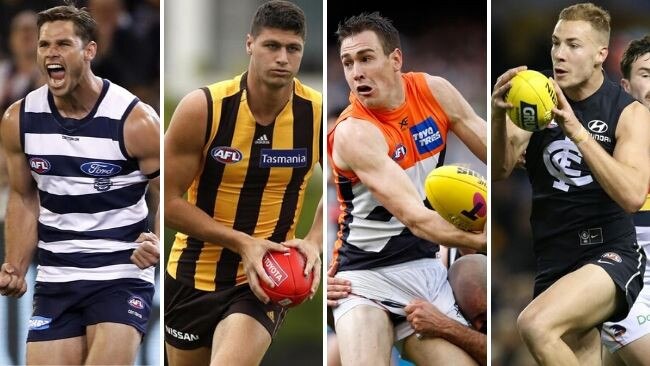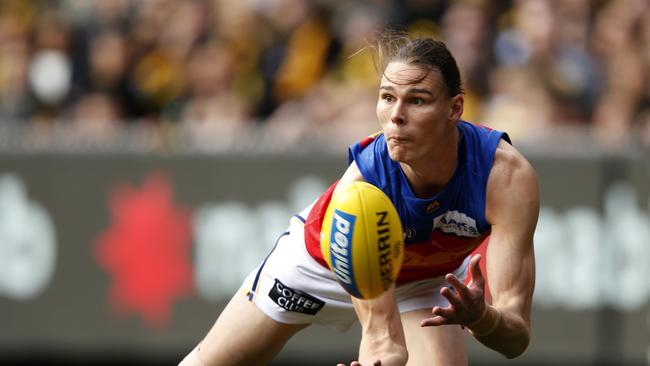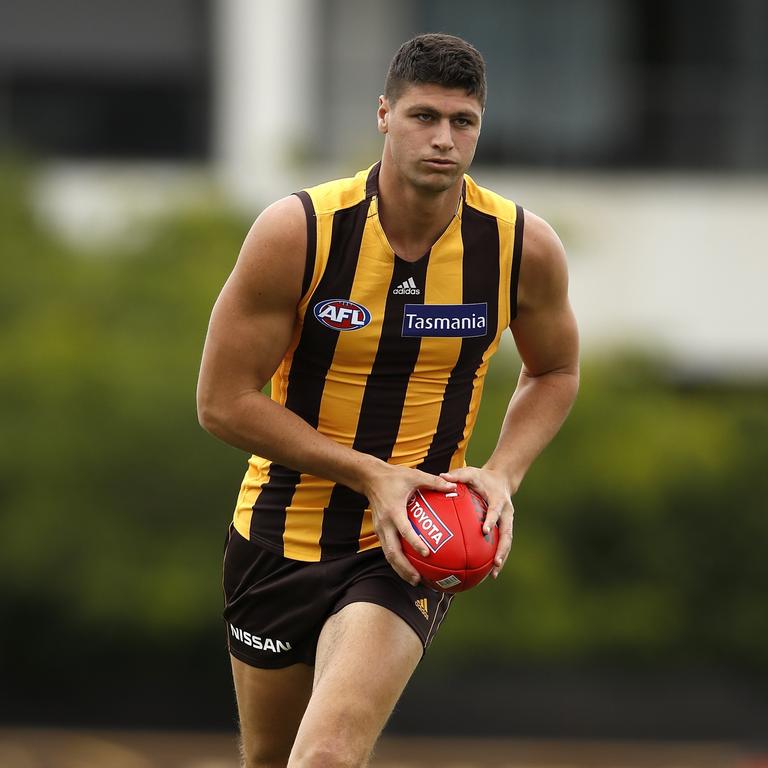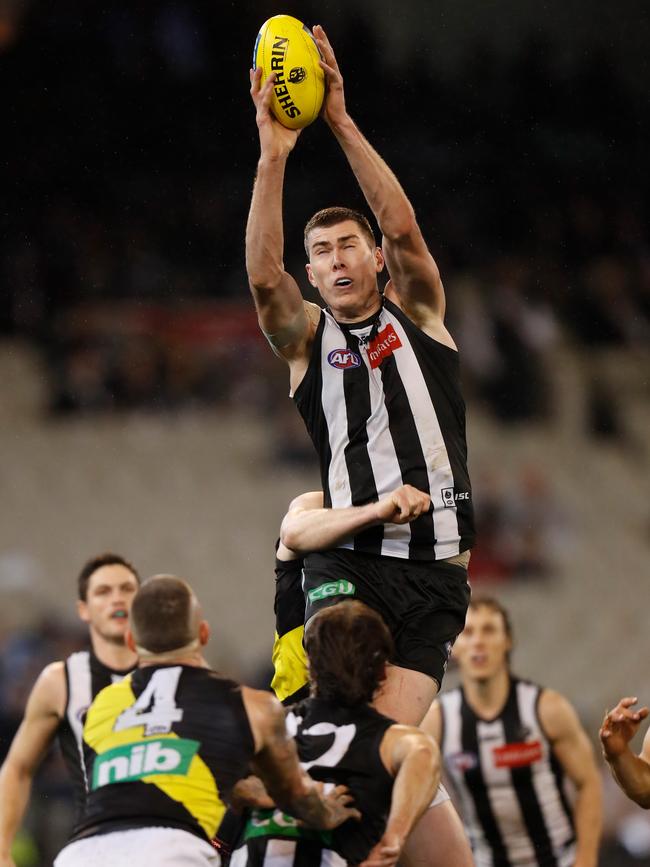Robbo: Playing multiple key forwards could be key to 2020 premiership
When the Bulldogs and then Richmond won the 2016 and 2017 flags with small forward lines, it was said the age of playing multiple key forwards was over. That’s most definitely not the case, Mark Robinson writes.

AFL
Don't miss out on the headlines from AFL. Followed categories will be added to My News.
What goes around comes around in Australian Rules.
When the Western Bulldogs won the flag in 2016 with a voracious small, ground-ball forward line and Richmond followed in 2017 with Jack Riewoldt and Jacob Townsend and bunch of midgets the obituary of the powerhouse key forward was penned.
Watch every match of the Marsh Community Series AFL pre-season comp LIVE & On-Demand on KAYO. New to Kayo? Get your 14-day free trial & start streaming instantly >
“People said the key forward was doomed, but I never thought that, I thought they were as valuable as ever,'’ Lions premiership forward Jonathan Brown said this week.
“It wasn’t that long ago was it, but really there wasn’t enough going around.
“We’re going through a pretty good era of key forwards.”
The boom of the key forwards - or at least the three key forward set-up - is set to flourish in 2019.
SCROLL DOWN TO SEE YOUR CLUB’S KEY FORWARD S
A list assessment of all 18 teams suggests clubs this season will play three big-marking, big-contesting forwards.
Some clubs have used that set-up for several years.
The Giants have Jeremy Cameron, Harry Himmelberg and Jeremy Finlayson. Brisbane last year played Eric Hipwood, Oscar McInerney and Daniel McStay.


Carlton played with a mix of Harry McKay, Charlie Curnow and Mitch McGovern and got mixed results. And North Melbourne is building around Ben Brown, Nick Larkey and Mason Wood, that's if Wood isn’t trialled as a defender this year.
Other clubs will explore the three-man set-up.
Geelong recruited Josh Jenkins to join Tom Hawkins and Esava Ratugolea.
Melbourne picked up Mitch Brown to maybe help Tom McDonald and Sam Weideman.
Jonathon Patton joins Mitch Lewis and Jack Gunston at Hawthorn.
The Saints believe a combo of Tim Membrey, Max King and either Paddy Ryder or Rowan Marshall will be required.
The Bulldogs added Josh Bruce to Aaron Naughton and Josh Schache.
One AFL coach said the way the game was played, with emphasis on slower ball movement, a tall forward was likely needed to play higher and be the down-the-line contester, leaving the other two key forwards to play closer to goal.
Another coach said depending on how dominant the ruckman was, such as Collingwood with Brodie Grundy, would dictate if the set-up was two key forwards and two ruckman. Whatever the case, it's still three tall forwards.
What coaches are wanting is an advantage. So many teams prefer hybrid, running defenders that often the third defender at 193cm might have to stand the third key forward who is 199cm.
MORE AFL NEWS:
Star Western Bulldogs forward Aaron Naughton compared to North Melbourne legend Wayne Carey
AFL pre-season track watch: Players who have been hit by injury in the lead up to season 2020
Dayne Beams taken to hospital after crashing car into power pole


Unquestionably, clubs will assess their defensive forward setups if they do play three tall forwards, the make up of the opposition's defence, grounds and conditions before deciding on their formation.
That the Giants played three talls and played off in the Grand Final is not being ignored.
Barring injury or preparation to Hawkins, Jenkins and Ratugolea, Cats coach Chris Scott will be keen to see how the three mix and match.
The Pies this season will be a team to watch. Mason Cox was injured in Round 20 last year. In their first final against Geelong, they played Brodie Mihocek and their bevy of mid-sized forwards. After Jordan De Goey was injured in that final, they brought in Ben Reid for the preliminary final against GWS.
Nathan Buckley maintained at the time, he would play Cox if Cox was available.
Could the Pies go with Cox, Mihocek and Reid in the same forward line this year? Can they fit them when you consider Jordan De Goey, Jaidyn Stephenson, Jamie Elliott, Travis Varcoe, Callum Brown and Will Hoskin-Elliott can all play forward, some better than others?

Brown, who thrived with Alastair Lynch and Daniel Bradshaw in the same forward 50m at Brisbane at the start of the century, said the forward six set-up was often a ''horses for courses'', citing the Bulldogs list in 2016 and Richmond's change of plan when Ben Griffiths was injured in 2017.
“If you have three capable three key forwards, your preference would be to play them,” Brown says,
“To win finals — and you want a brand which can win finals — you have to be good in the contested situation and be able to retain the ball inside 50m, or at least get the ball to ground.
“Because intercept marking is such an attacking weapon.
“If opposition sides can take intercept marks, it can start their attack, so if you have big key forward who can compete and bring the ball to ground, that would absolutely be the preference for teams.”

It’s why the Tigers went after Tom Lynch, knowing 2017 was a magical flash point rather than an evolution of the game.
The Tigers even played two ruckmen in last year’s finals series.
Ivan Soldo kept his spot because Toby Nankervis returned from a long injury spell. Still, the two of them played periods in the forward line.
In 2016, the Dogs were a small-ball menace. They played Jake Stringer, Toby McLean, Tory Dickosn, Luke Dahlhaus, Josh Dunkley, and largely one tall, either Tom Boyd or Ayce Cordy. This year it will be Naughton, Bruce and possibly Schache.
'You've got to work with what you've got,'' Brown said.
''And absolutely it looks like all clubs will experiment with three key forwards.''
'
Originally published as Robbo: Playing multiple key forwards could be key to 2020 premiership

